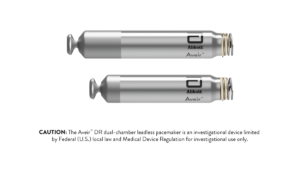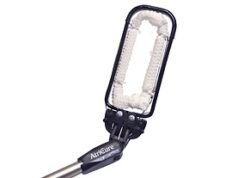 Abbott has announced the first patient implants of a dual-chamber leadless pacemaker system as part of its AVEIR DR i2i pivotal clinical study. The implant of Abbott’s investigational Aveir dual-chamber leadless pacemaker represents a technological milestone for leadless pacing technology and is the first to occur around the world within the pivotal trial, Abbott said in a press release.
Abbott has announced the first patient implants of a dual-chamber leadless pacemaker system as part of its AVEIR DR i2i pivotal clinical study. The implant of Abbott’s investigational Aveir dual-chamber leadless pacemaker represents a technological milestone for leadless pacing technology and is the first to occur around the world within the pivotal trial, Abbott said in a press release.
The study is being co-chaired by Daniel J Cantillon, clinical trial steering committee co-chair and associate section head and research director of Cardiac Electrophysiology and Pacing, Cleveland Clinic (Cleveland, USA), and Reinoud Knops, clinical trial steering committee co-chair and Department of Cardiology and Electrophysiology, Amsterdam University Medical Center (Amsterdam, The Netherlands).
Unlike traditional pacemakers, leadless pacemakers are implanted directly into the heart through a minimally invasive catheter-based procedure and eliminate the need for cardiac leads. While leadless pacemakers work like traditional pacemakers to regulate heart rate, they offer reduced lead-related complications and a less restrictive recovery period due to the minimally invasive implant procedure.
Historically, leadless pacing options have been limited to single-chamber devices because synchronisation of two leadless pacemakers has been highly difficult to achieve.
Abbott is seeking to solve this challenge by developing “i2i technology” to provide beat-by-beat communication between two leadless pacemakers, one positioned in the right ventricle and one positioned in the right atrium. This technology is designed to regulate the heart rate synchronously between chambers and allow for true dual-chamber leadless pacing.
The first implant was performed at Na Homolce Hospital in Prague, Czech Republic, led by site principal investigator Petr Neuzil, head of the Department of Cardiology, and assisted by site co-investigator, Vivek Y Reddy.
“The first-in-human implant of a dual-chamber leadless pacemaker is a major clinical milestone that will open up new possibilities for patients requiring pacing support,” said Daniel J Cantillon. “Abbott has designed a device capable of treating these patients, and we’re excited to see this technology advance patient care.”
Abbott has focused significantly on driving leadless pacing technology that can potentially improve care for more patients battling abnormal heart rhythms. The latest milestone for the Aveir DR leadless pacemaker follows recent data showing that Abbott’s investigational single-chamber leadless pacemaker—Aveir VR—met the prespecified primary endpoints in its pivotal trial.
“As leadless pacing technology has evolved, we’ve always viewed dual chamber leadless technology as a therapy evolution that would have a dramatic impact on more patients—but a technology that was going to be very challenging to develop,” said Knops. “That we’ve reached this point in time where dual chamber pacing without leads has become a reality is a monumental moment for modern medicine.”
The Aveir DR i2i leadless pacemaker is an investigational device being clinically evaluated as part of a global pivotal study and is not yet commercially available.











